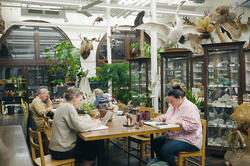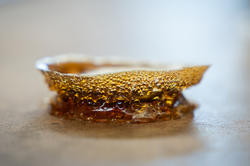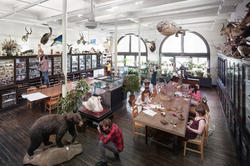In-person courses will return in the fall, along with a wide range of online offerings for students of all ages.
RISD’s Loop Lab Transforms Paper Waste into Materials for Studio Practice
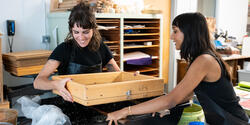
Scraps become stories in the Loop Lab—a pilot project that turns RISD’s own waste streams into raw materials for creative practice. An initiative of the Edna W. Lawrence Nature Lab, the Loop Lab was made possible by a $100,000 grant from the Maxwell/Hanrahan Foundation, which supports innovative people working in field-based science, art and craft, teaching, and protection of the natural world.
Over the summer, student assistants worked with faculty liaison and project coordinator Haley MacKeil MFA 21 PR, who teaches in the Experimental and Foundation Studies (EFS) division and whose practice is centered around innovative paper-making techniques. Together, they converted spring’s collected waste into reusable base materials and forms. They’ve also been documenting novel methods of making, sharing insights into the design potential of recycled matter.
“Paper is something that every department produces, so it seemed like a straightforward thing to start with,” says Houghton P. Metcalf, Jr. (HD 96) Director of the Nature Lab Jennifer Bissonnette. “It’s exciting to be able to engage the incredible ingenuity of the brilliant, creative minds we have on campus, as we work towards fostering a more regenerative future for RISD.”
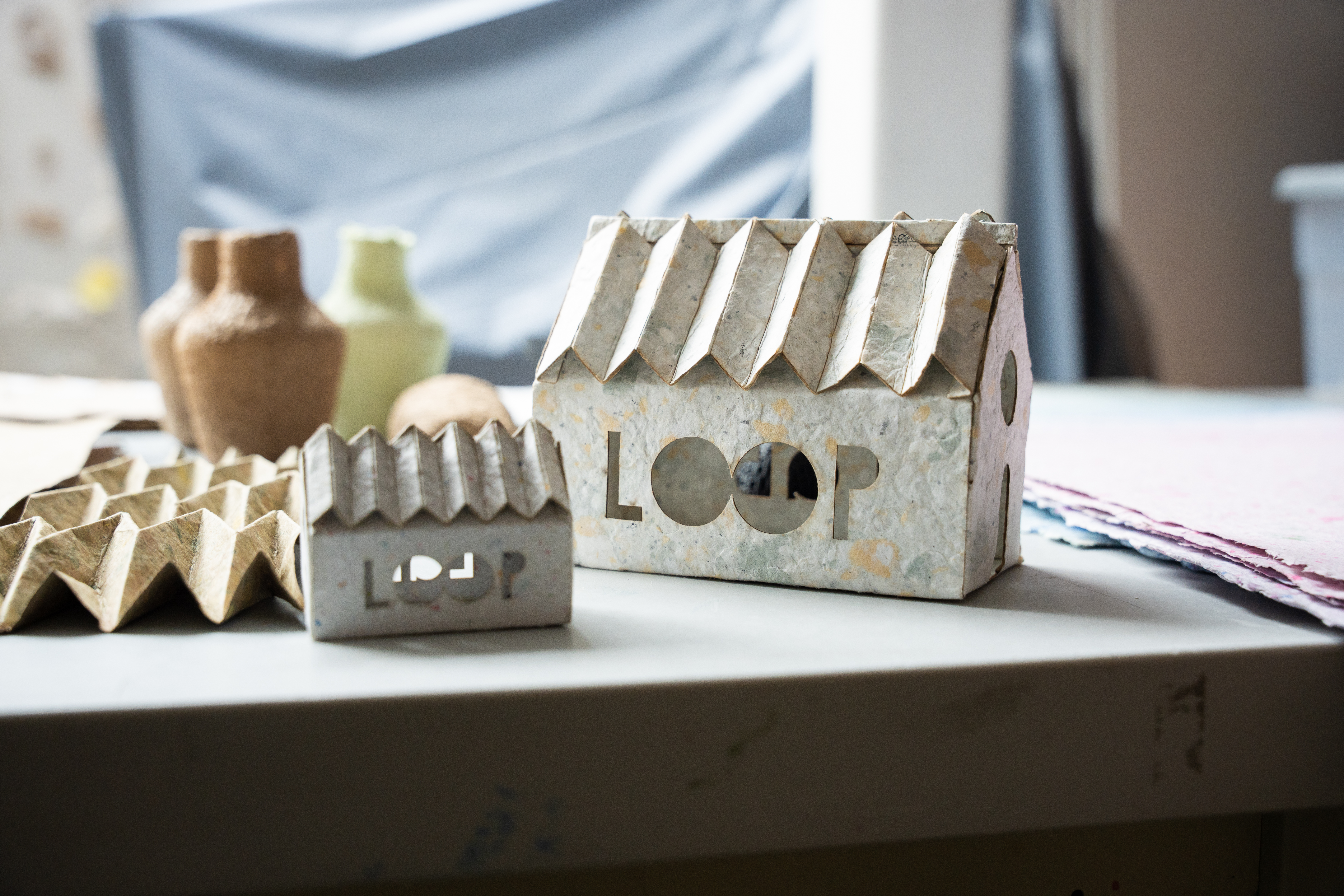
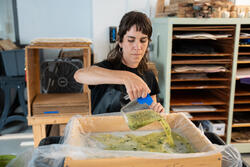
Departments across campus have come together to gather over 500 pounds of fiber waste including blotter paper and cardstock from the Printmaking department, cotton muslin and denim from Apparel Design, drawing pads and matte boards from EFS, and photo and bristol paper from the Graphic Design department, along with other materials.
“Everything is biodegradable because we aren’t adding plastics or aggregates where we don’t know how they’ll work,” explains Ankita Bhat 26 FD. “We use gelatin and corn starch, which are great especially where 3D printing exists, and we’re not adding more plastic to the world.”
Bhat, alongside Sophie Kaplan-Bucciarelli MLA 26, Disha Dharesh Kumar Rajashekariah MID 26, Henry Ding BArch 26, and William He 27 ID, spent much of this past summer researching what they could make out of the gathered materials: everything from vacuum molds to paper foam to new sheets of paper.
“The material has a preexisting authorship, which gives it a story that feels slightly more enhanced than if it’s bought fresh and pure at an art store,” MacKeil says. “Something that has a little history to it has a lot of value.”
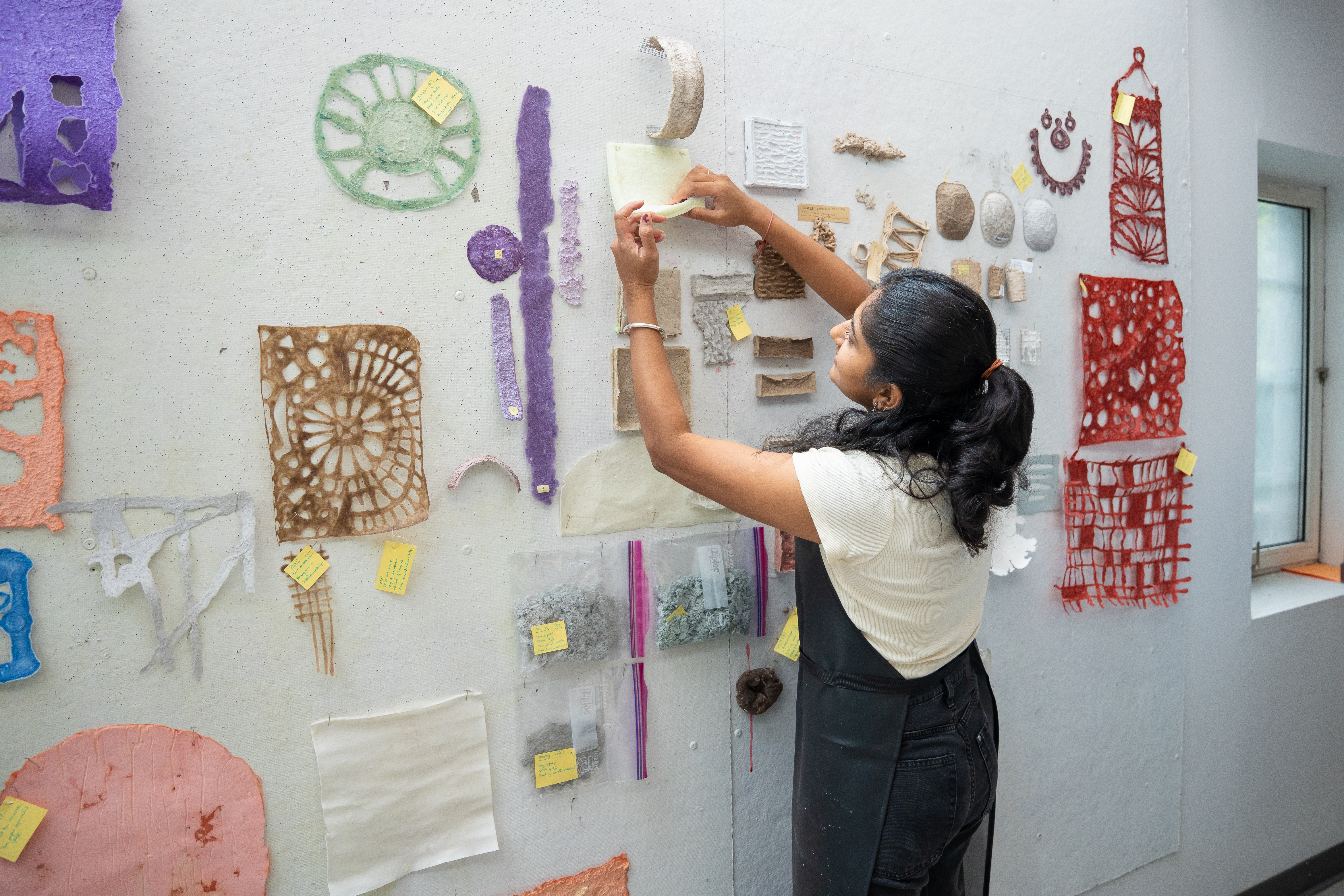
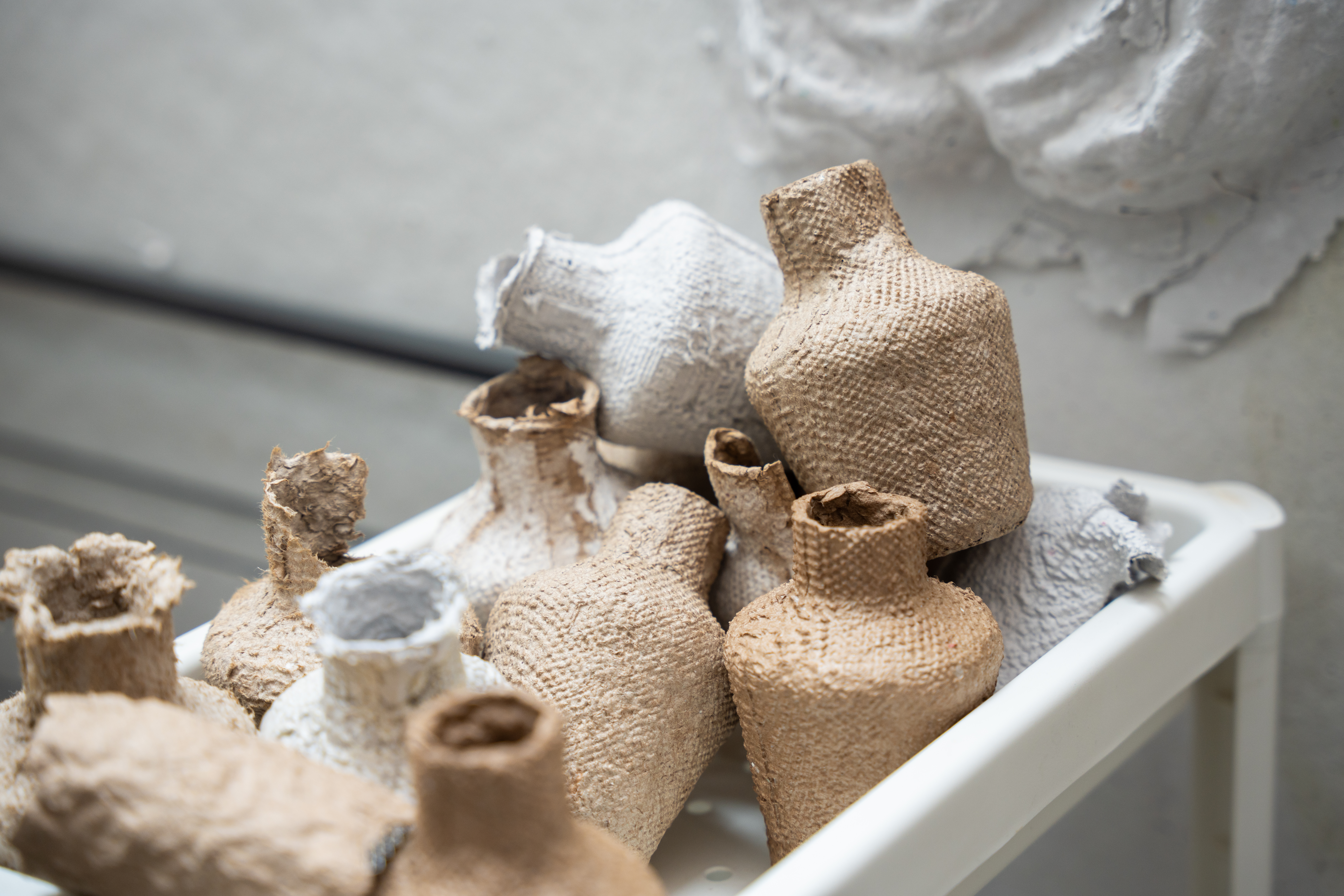
The group takes the discarded materials and transforms them into new paper, slurries, bricks, and clays ready for experimentation in both analogue and digital fabrication, including laser cutting and 3D printing. The materials will be available for students across disciplines at no charge to experiment with in their own work and offered through Second Life Exchange.
“The breadth of what you can create from what is considered waste is very exciting,” Kaplan-Bucciarelli says.
The Nature Lab plans to host workshops during the fall semester demonstrating different ways the materials can be used. Visit the Nature Lab online for more information about the Loop Lab, including how to order materials.
Kaylee Pugliese / Top image: students Sophie Kaplan-Bucciarelli and Ankita Bhat use waste to make a sheet of paper.
September 18, 2025
